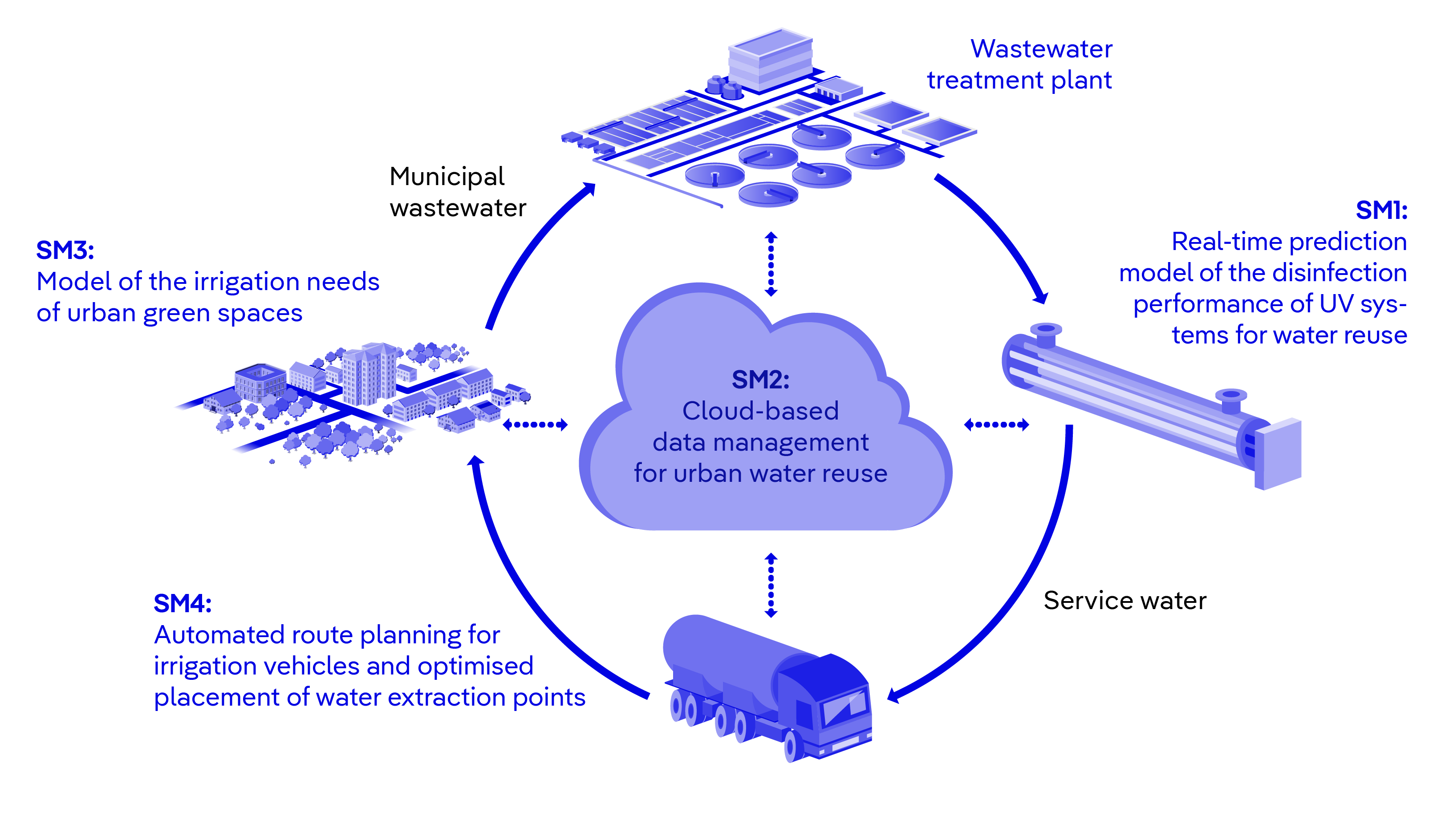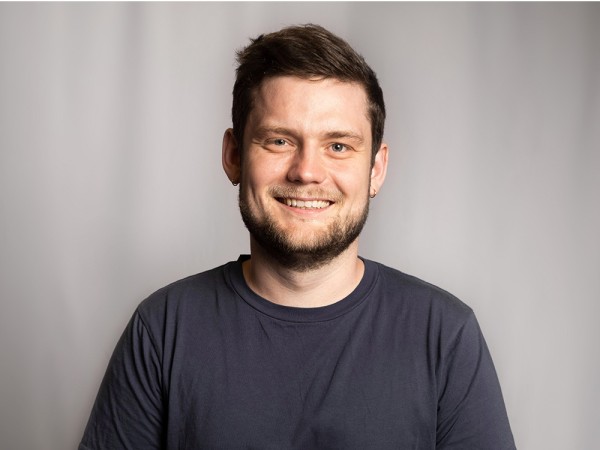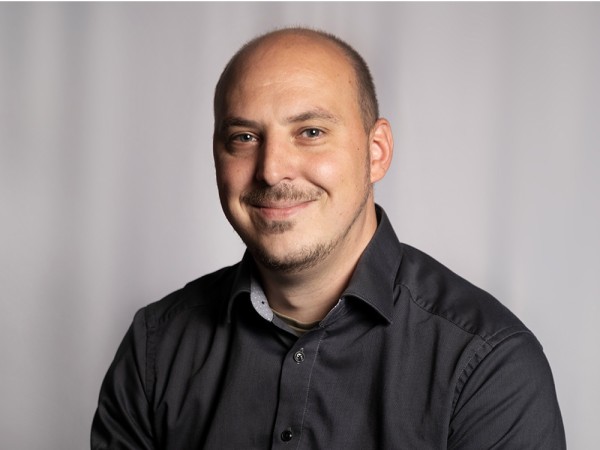Digital solutions for resource efficient and safe water reuse in urban areas
Irrigation of urban green spaces is becoming more and more difficult in many regions of Germany. Longer and hotter dry periods require more intensive irrigation, especially of younger trees, while water shortages are increasing, especially in the summer months. The introduction of water reuse measures and the thereby enabled decoupling of green space maintenance from possible bottlenecks in drinking water supply are therefore becoming increasingly important.
The DigiWaVe project, coordinated by KWB, aims to combine digital and analogue solutions for improved water reuse. At the project site in Bad Oeynhausen, tools to support municipalities in planning and implementing water reuse will be developed. To achieve this, we’re working together with the following partners: Stadtwerke Bad Oeynhausen, the local wastewater treatment plant operator and water supplier; Xylem Services, a manufacturer of ultraviolet light (UV) disinfection systems; Masasana, a software consultancy specialising in AI solutions; and Schölzel Consulting,
an independent engineer with practical experience.
Building on KWB's previous work on water reuse, four digital solution modules will be developed and tested in DigiWaVe to support water reuse in municipalities:
A realtime prediction model of the disinfection performance of UV systems for water reuse: KWB is testing different prediction algorithms for realtime prediction of microbial water quality. These are intended to support operators of a water reuse facility in implementing technical risk management measures in accordance with the new EU Regulation on water reuse, the water reuse factsheet series of the German Association for Water, Wastewater and Waste (DWA), which are still in draft form, and the German DIN 19650 on hygienic quality of irrigation water. The aim is for the model to be as comprehensible as possible, and at the same time, ensure safe compliance with the quality objectives ("explainable AI").
A cloudbased data management for urban water reuse: The networking and automation of plants and processes as well as the optimisation of the provision and exchange of data will be addressed by KWB and Xylem. Merging data from different data sources into one platform is challenging, especially if they should be used for realtime forecasting, or if they contain information about critical infrastructure.
A model of the irrigation needs of urban green spaces: The model will exclusively use existing data sources, such as
weather data, vegetation data from the parks and recreation department, and satellite images from the European earth observation programme Copernicus. To validate the model, soil moisture measurements will be taken at five reference plots distributed throughout the city. A water demand forecasting model without sensor networks is a novelty for urban parks and recreation management, and is intended to increase reusability in other cities. A web interface for visualising the results of the model will be developed in close cooperation with the users.Automated route planning for irrigation vehicles and optimised placement of water extraction points: A route planning tool which automatically creates route plans for irrigation vehicles will be developed. The forecasted irrigation needs from solution module 3, among other data, will serve as the basis for this tool. The complex problem of finding the fastest route when there are several options (the travelling salesman problem) is the challenge here. Our approach will reduce the complexity by clustering or merging irrigation areas without compromising the quality of the route plans. Furthermore, the optimal distribution of water extraction points along a possible pipeline through the urban area will be determined.
The cooperation of the project partners and the use of new technologies make the inter and transdisciplinary project DigiWaVe a promising way to meet the challenges of water scarcity and climate change for the irrigation of urban green spaces.

Diagram of the interaction of the solution modules (SM) in the DigiWaVe project







